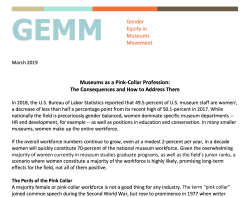Women and Anger, continued….
Posted: September 24, 2018 | Author: leadershipmatters1213 | Filed under: Leadership and Gender, Museum, museum career, museum staff, Workplace Bullying, Workplace Values | Tags: career, equality, nonprofit, soft skills, women |4 Comments
As I’ve said before, we have a lot of loyal readers, but they only occasionally comment. So since several of you remarked on last week’s post, I thought I should respond. Here’s the line that caused a few of you to grit your teeth: “It took generations for this gender divide over anger to grow, and it’s not going to go away this year. That means if you’re a woman or identify as one, you need ways to navigate the moments when you are angry.” You see that as problematic because I’m asking women or those identifying as women to change rather than demanding the system change for them.
First, let me be clear: I don’t think it is women’s obligation to bend to a system that, in the worst cases, stymies advancement through bullying and sexual harassment, and in the best cases advances women with the albatross of a pay gap. That said part of what’s wrong with the workplace isn’t just that angry women are treated differently than angry men. It’s that women’s emotions at the office are workplace nuclear waste. They never disappear. In my experience, months after being angry a woman staff member can be reminded of how emotional she is in an annual evaluation. For many women, this is akin to being slapped. As a result, they get angry and emotional which is exactly what the often male, sometimes bullying, boss expects.
So do I think women should walk on egg shells? No. But what are the consequences for a woman who stands up in a meeting and implodes? Not applause. Nope those go to her male colleague for “showing emotion.” Even if there’s grudging agreement that a woman did and said the right thing, I believe she may be haunted by her behavior. She’ll be tagged as the women who cries. Or shouts. Or looses her temper. All I’m saying is, if a woman is going to take that risk, she needs to have thought through the consequences. Because women being angry won’t change the system. Men and women need to see women’s anger differently and that will take time. My cautionary statements are there to protect women from pushback in the meantime.
One of the ways change may happen is when women leaders model (and talk about) behavior they want in their staff–both men and women–with the idea that cooling off first, and thinking about what you want to say versus what you need to say, are behaviors everyone could and should use.
*****
This week will find Leadership Matters (Anne Ackerson and me), along with our colleague Greg Stevens, Program Director for Seton Hall’s MA in Museum Professions, leading the Leadership Forum that precedes the AASLH Annual Conference in Kansas City. We’re focusing on three big challenges for 21st-century leaders: Empathy as an Essential Leadership Skill; Whether Museum Leaders Treat Staff as Assets or Liabilities; and How to Create Museum Careers that are Part of a Continuum of Practice. It’s a lot, but we know the folks who signed up are full of ideas, and we applaud them and their organizations for supporting them in taking the time to think about not just what they do, but why they do it. Stay tuned for our update from beautiful Kansas City.
Joan Baldwin










Thanks for this, Anne. I think your reflections are spot on. I’ve been one of those women who haunts herself with how I’ve expressed anger in the workplace in the past, and I’m often harder on myself than a colleague would be. I agree that thinking through the consequences can lead us to changing the climate, even if only by small steps. And you’re absolutely right, it is also on those of us who have reached leadership positions to coach and mentor both the men and women on our staff in how to react, or not, so we get to the heart of what the issue is and collaboratively work toward a solution that is in the best interest of the organization, and ultimately, those whom we serve.
Isn’t it also our responsibility as women leaders to create a safer environment for female anger to be expressed? Sometimes anger is legitimate and sometimes an expression of it is exactly what moves a project forward, corrects a wrong, or overcomes an obstacle. If the issue is that women’s expressions of anger are too often held against them in evaluations or negatively impact their standing, should women in positions of power find ways to stop reinforcing that dynamic, and handle legitimate anger, when it surfaces, with respect, avoiding unjust repercussion?
Agreed.
Thanks for this post. This might sound like a nitpick, but it’s important to a lot of people (myself included: it’s clear that you care about inclusive language, but I’m not sure that “women and women-identified” is as inclusive as you mean it to be. Who are the women who aren’t woman-identified? It sounds like you might be using “woman” to mean cis woman and “woman-identified” to mean trans woman, and I’m sure it’s not your intent to separate some women out like that. Perhaps what you’re actually getting at is “all women, plus anyone else who gets read as a woman by their coworkers,” so you’re including agender and genderqueer people who look feminine? It sounds like that group is what you are really talking about. That could be shortened to “women and people who get read as women,” perhaps.